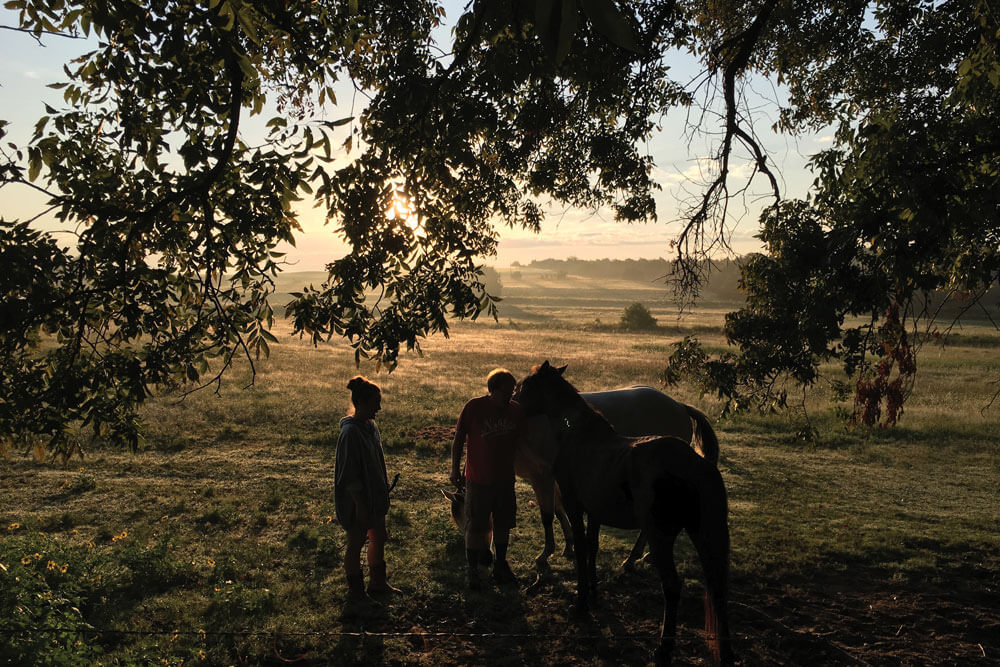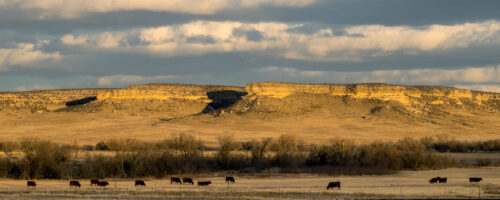Our modern world tantalizes with distractions that often leave us feeling hollow. The TikTokking of our attention span and the endless streams of entertainment can never replace our need for stillness and reflection.
So, we search. We seek that place where what is drained by this noisy and cluttered life can be refilled. Maybe it’s a sandy beach, a rooftop perch or a secret garden. Maybe it’s a workshop strewn with greasy engine parts. Maybe it’s Dad’s fishing hole or Grandma’s dining room table. It doesn’t matter where or how we find it. It just matters that it’s there, our place.
Let me take you to mine.
Drive west out of Oklahoma City until the cement and storefronts give away to an endless sea of grazing lands that stretch to the horizon. Keep going. You’re not even close.
Drive until the gentle prairie hills are cut by jagged creeks and the horizon is dotted with wind farms that stand like an alien Stonehenge; whooshing blades gathering up the winds that go sweeping down the plains.
Go a little further and you reach a simple rectangle of land that to most passersby seems like a copy-and-paste of the surrounding landscape. Nothing to see here. Nothing unique. Just a family’s entire history.
For five generations of my wife’s family, this place has simply been known as “the farm.” It’s their oasis, and now it’s mine.

Here cell phone coverage strains to bring the constant chirp of distraction. Here we come to retreat and rest, to disconnect from the world and reconnect with each other.
Here Hugo clomps up to the fence, nosing your pocket for a treat, more Labrador than quarter horse.
Here a trio of Great Pyrenees dig deep dirt beds into the orange sandy loam and sleep until the baying of coyotes beckons them to their night job.
Here so many of my best memories have taken shape. Mornings on the porch swing sipping coffee and warming our faces to the rising sun. Afternoons under the pecan trees indulging in the lost art of conversation. Evenings playing dominoes with Grandma, who tells stories of a time we can barely imagine.
Here a gate hangs between the “yard” and the east pasture. I love this gate with its chipped red paint and rusty hinges. I knelt in the sand by this gate more than a decade ago and proposed to the love of my life. And here I return to think. Listening to the two-note call of the bobwhite quail. Watching the summer sun bleach the sky. Considering the big questions of life.
Two years ago, when much of life seemed uncertain, I stood at this gate and listened to the silence. I came to understand my mind and charted a course forward. I came to understand my wife and her love for this place. This farm is not my past, these are not my roots, but this land is a part of me now. Someday we hope to add a few branches here.
And for the first time I understand my grandfather, a stone monument of a man who — when I was barely old enough to form a memory — stood in a dusty field and looked to heaven praying for rain. Why would he endure such a life? Why would he give so much to the land? Why would he stay?
I understand now. He found his place.
Thousands of ranching families across the nation walk their land not as mere owners of property, but as stewards of a legacy, keepers of holy ground. Yes, it is the place they work, but the farm and the ranch are also their sanctuary, where they commune and reflect.
I’ve tasted only a morsel of this life, but it’s enough to understand that as the rancher tends to the land, the land heals the soul of rancher.



Comment